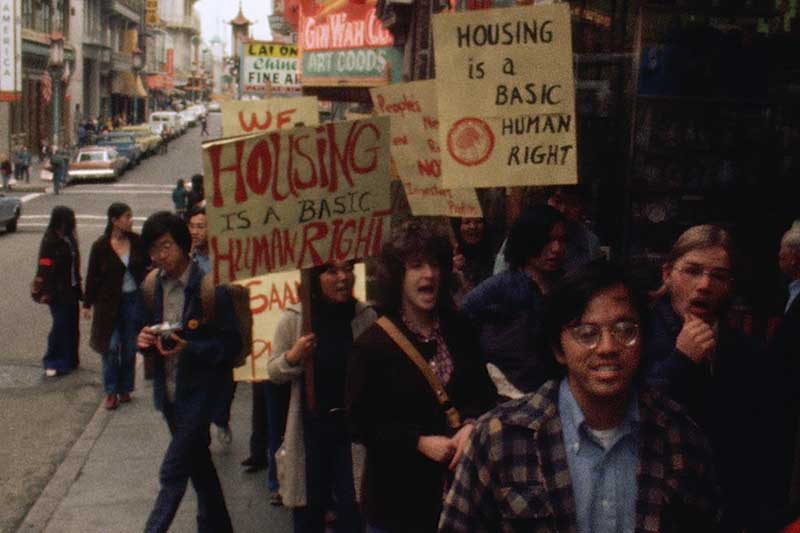Wed July 9th Open 11 AM–5 PM
Artists-in-Residence SF Urban Film Fest on Engagement in a Digital World
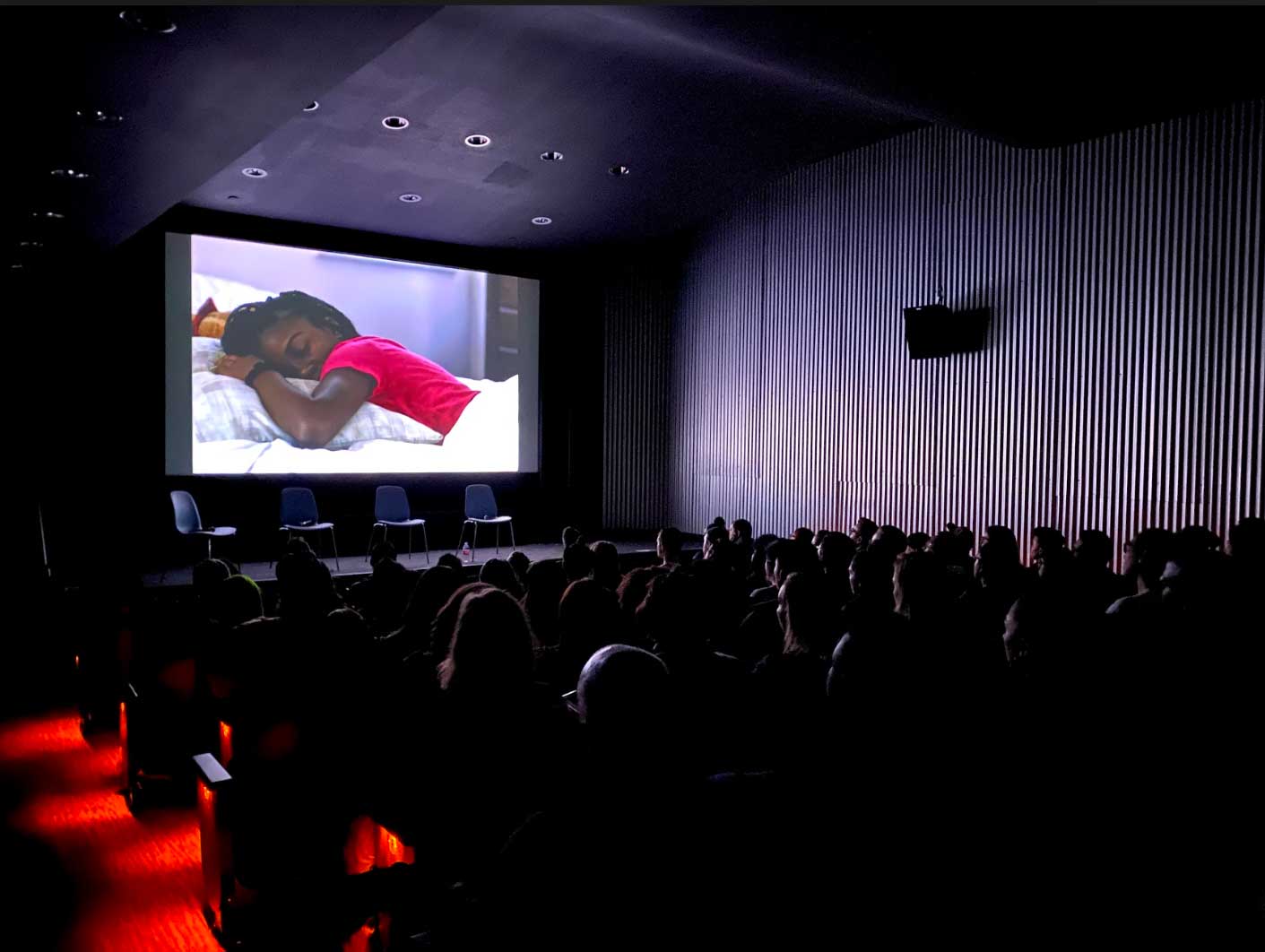
As a multi-disciplinary collective, SF Urban Film Fest gathers a diverse, engaged audience and uses the power of storytelling to spark discussion and civic engagement around urban issues. Founded by Fay Darmawi, the SF Urban Film Fest core team includes Robin Abad Ocubillo, Omeed Manocheri, Susannah Smith, and Ronald Sundstrom, with Kristal Celik supporting as the first ever Festival Manager this year. Together, the organization brings in expertise in urban planning, housing policy and finance, philosophy, film production, and writing to ask what it means to live together in the city and make urban planning more equitable and inclusive.
As part of their two year residency at YBCA, SFUFF will present our first neighborhood commission City is Alive on October 17, 2020, in partnership with Crux Collective, Imprint City, and Young Community Developers. City is Alive brings together community partners in San Francisco’s Bayview neighborhood for a socially-distant and virtual film and public art experience exploring stories of the everyday heroes and their legacy of fighting for community resources and bringing joy to the Bayview.
The core members of SFUFF sat down with Curatorial Project Manager Fiona Ball to discuss their residency goals while at YBCA and the potential power of online engagement. This interview has been edited for clarity.
Fiona Ball: Thank you all for taking the time to speak with me and further introduce yourself to the YBCA community. We are so thrilled to have you as our artists-in-residence for the next two years. Let’s start off with, what is your initial vision for SFUFF’s two-year residency at YBCA?
Fay Darmawi: This residency offers SFUFF the opportunity to experiment working within another institution and help shape its civic engagement practices. We want this experience to make SFUFF stronger, rather than become diluted by the institution it’s embedded in. We want to see if there are broad principles we can then apply to other cultural institutions who are grappling with the need to be more civically engaged and the desire to host relevant conversations.
Omeed Manocheri: I would like to see both organizations establish an open methodology for socializing information theater into public life. To do this, I believe we will need to strive to accomplish a few tangible goals; reinvigorate public space as a forum for public discourse, create a common language and demystify the existing language of politics and urban planning, and finally, recognize this work as upskilling community to better engage with public policy and city planning. Underlying all this is continuing to fight for equity and access for all to alleviate an otherwise divided society.

Susie Smith: My early, Pre-COVID vision, was for a partnership that would build networks for both SFUFF and YBCA. For SFUFF, having a “home” would mean being able to focus on building out longer engagements with community and film partners, and being able to collaborate on themes with YBCA. I was hoping to bring new audiences into YBCA, and bring YBCA audiences to new artists. In this new world of social distancing, I think I still want to do that, but now I am thinking a lot more about ways for YBCA and SFUFF to support these conversations about the city, outside around the city. How can we ignite civic participation with films in our streets and windows? How can we spark even just help spark moments of surprise and joy that remind us of our interdependency and strength?
Robin Abad Ocubillo: The SFUFF residency at YBCA is built around both organizations’ common, covalent objectives: impacting public discourse deeply and uniquely. We’ll develop YBCA’s film programs into one reflective of the Center’s civic ambitions. SFUFF, as an organization but also the individuals, stands to grow meaningfully during the residency too. Collaboration between YBCA and SFUFF curators is an exciting prospect! This will drive our respective audiences towards more self-generated engagement with the public interest issues we all care passionately about shaping.
FB: Why is it so crucial for arts and cultural institutions to focus on civic engagement right now?
SS: While “sitting at home” during Covid, the importance of arts and culture in our lives have been made clear. We read, watch movies and TV, listen to the radio, look and post photos and videos online. We learn, teach, and engage each other through the arts. Arts and cultural organizations are storytellers, and now more than ever, their work is to lift the stories that are not being told elsewhere, and where the main motive is not profit. Focusing on civics—the everyday way we engage with each other—helps us know each other and tell our stories to power.
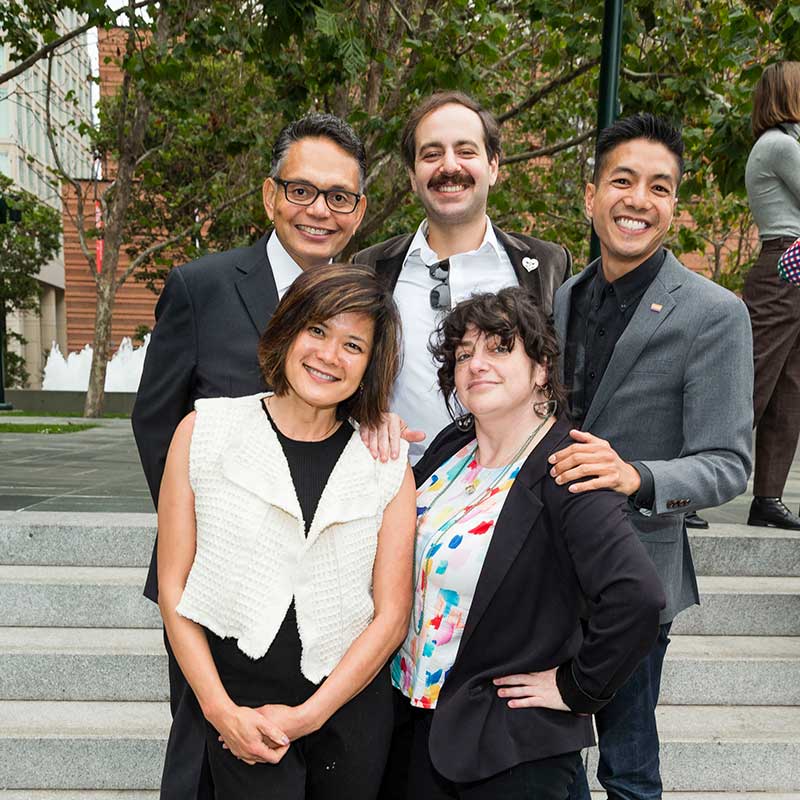
RAO: Humanity is at a critical point of inflection—socially, politically, environmentally. Our very human struggle, between emotion, belief, and tribalism on the one hand; and reason, common knowledge and purpose on the other, is being magnified and tested. So it is crucial for arts and culture organizations to focus on civic engagement at this time when public discourse is so charged and polemical. What does it mean to be a citizen of the world? How am I showing up, consciously or not, for or against the public interest? What is my role reifying or dismantling systems of power? These are the questions that institutions of arts and culture can help us explore and clarify. Creating and experiencing art is an entree to a deeper self-awareness, beneath cognition and even emotion. That awareness is requisite for empathy, which in turn is the basis of shared humanity. We need that sense of common cause in order to evolve into a just and sustainable global society.
RS: John Dewey wrote in his book The Public and Its Problems (1927) that there isn’t a public, there are publics. His point was that the ideal of a unified American public had come to an end and that it had become permanently fragmented. I don’t think that the American public was unified in 1927—that fantasy always ignored America’s deep racial and class divisions—but that there are publics, and that we are fractured and fragmented, is true. Because of that truth which feels like it just keeps on getting worse in awfully horrible ways, it is important to have serious and difficult conversations about the meaning of ideas like “public,” “civic belonging,” and “civic engagement.” While we won’t be able to build a narrative of American unity and solidarity that is true about our divisions as well as our diversity, we can be about the business of building an inclusive, expansive narrative that gets us beyond our narrow divisions.
FB: What is the potential for online public engagement?
OM: Until we address the shortcomings of the internet and the various online platforms we choose to gather on, the potential for online public engagement is limited. On the positive side we can aspire to the manifesto of John Perry Barlow’s “A Declaration of the Independence of Cyberspace” and to its counter we’re stuck in the current reality—manifestations of Orwell’s 1984.
SS: #BlackLivesMatter, #Metoo, and even microtargeting of ads on Facebook that may have changed the election, show the potential of online public engagement. TikTok is at the heart of amazing public engagement, even as it is used to harvest ungodly amounts of data. The potential has been and will be there, if we can create lively spaces for interaction and co-creation. It’s the capitalism that kills it.
RS: I’m skeptical about online activism. It basically runs on what sociologists call “weak” ties. While it’s possible to build movements based on hashtags and to get some number of people fired up on twitter or even to hit the streets, real and enduring social movements and change depend on personal and institutional “strong” ties. Movements and conversations built out of strong ties are less ephemeral than ones built out of weak ties—not that weak ties can’t lead to strong ties. I think the movement from weak ties to strong ones is where online public engagement can be of use by serving as platforms that invite participants into deeper engagement.
ROA: Both SFUFF and YBCA are place-based institutions. We are preoccupied with the realities of race, justice, economics, politics showing up in physical, spatial, social places. As with any communications technology, online engagement does have the potential to broaden exposure beyond the original audience format of the art form; and beyond the original place of occurrence or presentation. Online engagement should be a supporting, but not principal, means of generating and presenting material. It could be a medium for broadcasting an event that is occurring (or did occur) in real time and space. Or a method for channelling inputs that can impact that occurrence. Or gathering feedback on the occurrence.
FB: Why is film a great medium for engagement both online and in-person?
FD: Although stand-alone documentary films have tried to tie the actual making or screening of the films themselves to social outcomes in the real world, we have not seen many film festivals adopt that responsibility. I would argue that film festivals actually do the opposite in that they are exclusive by design. Who can afford a $500 pass to Sundance? A great local film festival that does try to tie film, audience engagement, and environmental policy is the SF Green Film Festival whose festival director was one of the only film festival people who offered to help us launch. But what we are seeing with COVID-19 is a leveling of the playing field among huge and small festivals because now we are all virtual, using the same platforms, and potentially have access to the same audiences worldwide, because the price of a ticket is now $0 to $10, not $500.
SS: In-person film festivals and theaters have been struggling for years because of streaming, and have pivoted by pushing for more one-time events and early access. The big festivals rely on being a market, or awarding winners that are gate-keeper/openers. An online festival can democratize who gets to participate and expand audiences, still acting as a form of “curator/aggregator”, but will also need to provide a one time experience—from one week “runs” of films, to filmic book clubs, to post screening Q&As, there are many ways to pivot.
RAO: Let’s flip the question: How can online engagement adapt to fit film programming? Online engagement could help us extend our reach through broadcast and even real-time participation from virtual audience members. For example, through digital interactivity before and after the webcast of the film(s). Online tools easily support traditional panel discussions or Q&As. But what about other experiments? Film projects that crowd-source material from participants in far-flung parts of the world? Simultaneous broadcasts of the same project in different places throughout the urban environment?
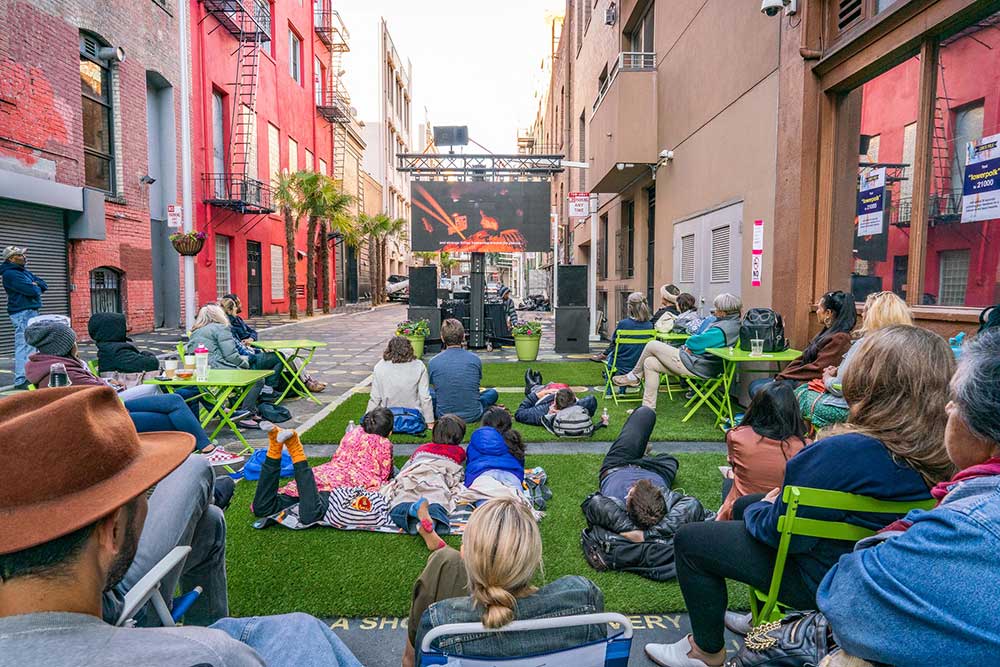
FB: SFUFF forefronts activism in much of their programming, inspiring the public to create actions after they attend a screening or event. How can other arts organizations inspire their public towards civic participation?
OM: Accountability and sustained engagement around a topic area.
SS: Bring people into discussions that are not usually there, use the artwork to be the catalyst of extended discussions, make sure communities are involved at every level of planning, encourage a For Us/By Us ethic that lifts communities own voices. Creative Reaction Lab has great framework.
FB: Why is long term planning important for public engagement?
SS: Trust building and shared investments. Community-led design takes time.
RS: I agree with Susie. Take a lesson from ethnographic field work. You don’t just show up and think folks are going to share honestly or that you’re going to get an accurate picture of what a community’s life is like from a quick interaction. It takes years of investment to build trust.
FB: Lastly, what should arts and cultural institutions be thinking about right now?
FD: Arts and cultural institutions in San Francisco, and in many cities around the world, should be thinking about their unique position to host and frame critical dialogue on urban issues, bringing to fore works of art, including film and cinema that ask core questions on what it means to live in a city. In thinking about their role as convenors of dialogue, these institutions are forced to think about who has been included and excluded in these conversations, and how those who have been excluded can now be included. This is so very important right now because we need platforms that bridge our growing divides, not only politically but socio-economically, as we see growing inequality in all aspects of our lives from education, housing, transportation, health, etc. But why the arts? Because the arts is an expression of our humanity and through these human stories and pursuits we come to shared understanding to begin to dismantle the inequities.
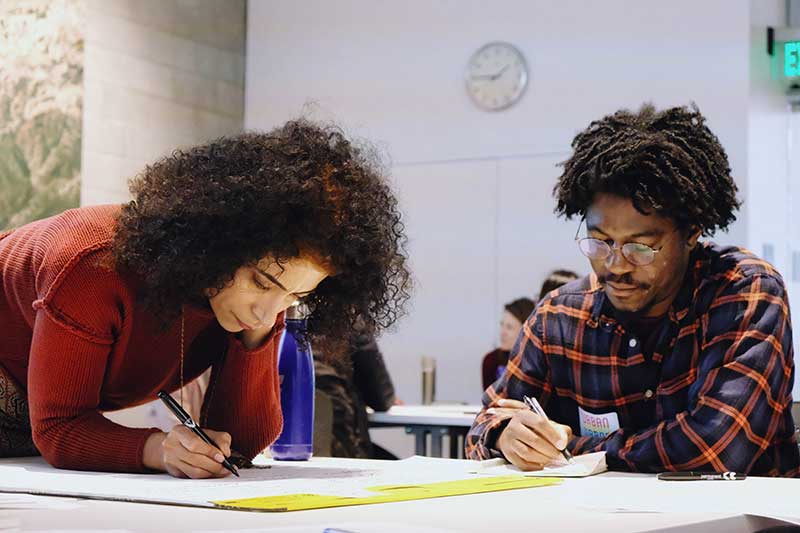
SS: Institutions need to remember to think locally. Build the local systems, and see how the arts are a part of the mutual aid networks we are building right now that will sustain us. The arts organizations can build and highlight local engagement, and form a network of storytellers on a national level.
RS: They should be thinking about justice, and not their narrow visions of justice, but the kind of justice that makes them uncomfortable and challenges their assumptions about what matters, what is beautiful, and who belongs and has a say in their institutional work.
RAO: Arts and culture organizations should address social, racial, and environmental justice. Implicit in this is a critique of power systems: not only the artists’ critique, but a prompting of the general public to interrogate the ways in which we’ve arranged power and privilege. Art has the unique capacity to help us see and feel issues in a new light, to deepen empathy and lead us to a sense of shared humanity. That commitment to common purpose is the basis for achieving justice, equity, and equality.

